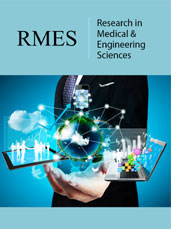- Submissions

Abstract
Research in Medical & Engineering Sciences
Human and Structural Factors Influencing the Control of Antimicrobacterial Resistance
-
Open or CloseMaria Cristina Morán Moguel1, Jorge Horacio Portillo Gallo2 and Jorge Manuel Sánchez González3*
1Department of Philosophical Methodological and Instrumental Disciplines and Department of Molecular Biology and Genomics, University Center for Health Sciences, University of Guadalajara, Mexico
2Pro treasurer of the Latin American Association of Clinical Pathology and Laboratory Medicine, AC (ALAPAC/LM), Mexico
3Vice-President of the Mexican Federation of Clinical Pathology, AC (FEMPAC), Provost of the National Institute of Learning, Skills and Research in Sciences, SC (INAHIC), Mexico
*Corresponding author:Jorge Manuel Sánchez González, Diana Natura Residential, H1, Zapopan, ZC 45221, Jalisco, Mexico
Submission: December 09, 2024;Published: December 17, 2024

ISSN: 2576-8816Volume11 Issue 3
Abstract
Despite global efforts, antimicrobial resistance (AMR) has not been controlled. In 2024, the World Health Organization (WHO) updated its list of priority pathogens to include 15 families of resistant bacteria (critical, high, and medium). Today, the development, transmission, and spread of AMR remain uncharacterized, so the human and structural factors specific to each region that influence its control must be intensified and identified. Annually, 5 million people die from AMR, a number that will increase by 2030, with annual costs to health care and its management potentially reaching 412 billion USD. Unfortunately, it is common to prescribe antibiotics without microbiological studies, ignoring the adverse effects on the patient. A group of experts participated in the identification of 40 human health research priorities (WHO), which include global perspectives in low- and middle-income countries (LMICs). It is estimated that 40% of hospitalized patients receive antibiotics at some point, many of them unnecessarily, generating selective pressure for AMR. In Mexico, previous studies by our group reported an increase in multidrug resistance (MDR), extended-drug resistance (XDR), and pan-drug resistance (PDR), with 69% of gram-positive isolates having shown MDR, XDR or PDR. In fact, two cases of Pseudomonas aeruginosa from neonatal intensive care units showed PDR.
An incomplete infrastructure, economy, and education system, as well as inappropriate training, cultural barriers, and uneven policies, contribute to AMR spread. The WHO points out that in developed countries, patients have a 50% adherence to treatment for chronic diseases, this being lower in developing countries. Thus, improving adherence to and proper use of antibiotics is a challenge for the global health system. Countries must implement national action plans (NAPs) and improve global coordination among governments, industries, and public and private organizations, providing resources for expert training and research
Keywords:Antimicrobial resistance; Priority bacterial pathogens; Healthcare-associated infections; Multi-drug resistance; Extended drug resistance; Pan-drug resistance; MDR; PDR; XDR
Abbreviations:AI: Artificial Intelligence; AMR: Antimicrobial Resistance; DHT: Digital Health Technology; FAO: Food and Agriculture Organization; GARDP: Global Antibiotic Research & Development Partnership; HAI: Healthcare-Associated Infections; IAHC: Infections Associated with Health Care; LMIC: Low- and Middle-Income Country; LPS: Lipopolysaccharides; MDR: Multi-Drug Resistance; mNGS: Metagenomic Next-Generation Sequencing; NAPs: National Actions Plans; PDR: Pan-Drug Resistance; PCR: Polymerase Chain Reaction; SDGs: Sustainable Development Goals; UHC: Universal Health Coverage; UK: United Kingdom; UN: United Nations; WHO: World Health Organization; WOAH: World Organisation for Animal Health; XDR: Extensively Drug Resistant
 a Creative Commons Attribution 4.0 International License. Based on a work at www.crimsonpublishers.com.
Best viewed in
a Creative Commons Attribution 4.0 International License. Based on a work at www.crimsonpublishers.com.
Best viewed in 







.jpg)






























 Editorial Board Registrations
Editorial Board Registrations Submit your Article
Submit your Article Refer a Friend
Refer a Friend Advertise With Us
Advertise With Us
.jpg)






.jpg)














.bmp)
.jpg)
.png)
.jpg)










.jpg)






.png)

.png)



.png)






